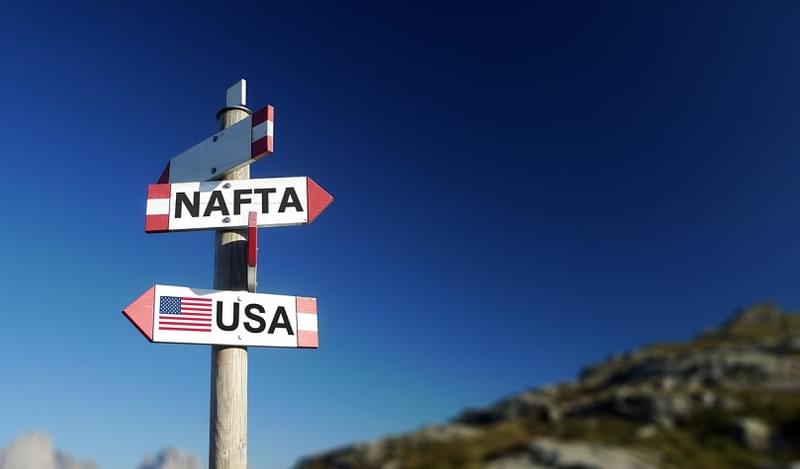The Mexican economy has been on a rollercoaster ride since Trump won the race for the US presidency earlier this year, in large part because the renegotiation of the North America Trade Agreement (NAFTA) was a cornerstone of his campaign. It was general consensus among investors and analysts that a Trump presidency was bad news for the country’s southern neighbour.
The Mexican peso, which had become a proxy for Trumps chances on winning the presidency during the electoral campaign, was one of the worst performing currencies in the world in the first quarter of 2017, reporting record losses and trading as weak as MXN21.96 per US dollar in January.
Fast forward to a few months, and none of the apocalyptic predictions for Mexico appear to be coming true; on the contrary, Mexico’s Central Bank upgraded the country’s growth prospects from 1.5% to 2.5% for 2017.
According to Martin Castellano, Deputy Chief Economist, Latin America Department at Institute of International Finance (IIF), the resilience of Mexico’s economy despite the “Trump factor” is mostly due to a combination of factors, including proactive policies put in place by the government to strengthen the country’s macro position ahead of the upcoming challenges, and a robust performance of nonoil exports and private consumption.
The nation’s exports, excluding oil, which has been hit by lower production at state-run oil company Pemex, grew 9.2% in the first quarter from a year earlier – the strongest pace in more than two years. The Markit Mexico Manufacturing Purchasing Managers' Index rose to 51.2 in May, from 50.7 in April when adjusted for seasonal swings.
The agricultural industry also expanded to 1.1% in the first quarter of 2017 compared to 0.6% in the previous quarter, while the industrial sector grew 1.1% in 1Q2017 compared with 0.7% in the last months of 2016.
The currency seems to have recovered most of its post-Trump losses, trading at MXN18.41 in early June, its strongest levels in more than a year, after polls predicted that Alfredo Maza, member of the ruling PRI party, was going to become the next governor of the State of Mexico. This election was viewed by many analyst and investors as a crucial test for PRI prior to the 2018 presidential election.
Mexican or Mexicant?
The Mexican economy will still need to overcome a number of hurdles in the upcoming year.
“A NAFTA reshuffle and the 2018 presidential elections entail sizable downside risks to the growth outlook. In the case of NAFTA, significant integration of supply chains in the countries should help achieve a mutually beneficial agreement, although there is considerable uncertainty over the timing and size of the changes to the current framework. Uncertainty over the stability of trade relations with the U.S. will likely take a toll on foreign direct investment this year and next,” Castellano explained.
Inflation is on the rise in Mexico, accelerating to 6.18% in the first few days of May, the fastest pace since 2009. This figure is almost double the Central Bank’s annual target of 3%, and it reflects the effects of the increase in oil prices in the first months of the year – which has subsequently spread to a number of consumer goods.
Things might get worse before they get better. Agustin Carsten, the governor of the Central Bank, estimates inflation might continue to rise in the coming months.
"We still expect we should reach a ceiling in the rise of inflation in the next few months and ... in the second part of the year we should see a much more downward tendency,” Carsten told Reuters in early June.
The Central Bank has hiked interest rates by 375bp this year and is expected to continue to tighten monetary policy throughout the year.
But there is still much to achieve beyond monetary stabilisation. According to Castellanos, the government will also have to keep a stronger grip on fiscal spending this year, which will be critical to avoid a downgrade of Mexico’s credit rating and help sustain investor confidence. That may be easier said than done as we head into an election in 2018, which could prompt new spending initiatives to curry favour with voters in the run-up.









